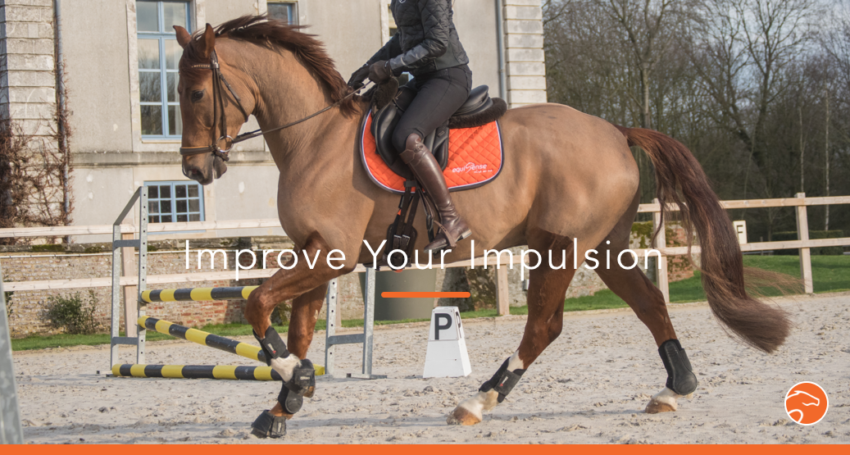
4 Training Exercises to Improve Your Horse’s Propulsion
Mastering the art of impulsion is important to progress, both in dressage and jumping. It is important when jumping to have the correct canter to approach the jumps, or in dressage to have the correct pace to perform your movements, this can only be achieved when you have correct impulsion. In this article, we have developed 4 exercises which you can use to improve your impulsion!
Table des matières
The Progression Outline
Do you know what a progression outline is? It is a document produced by the FEI and the FFE that gives basis of judgment to all judges for movements of all levels. It turns out that aside from being used by judges, it can be an interesting tool for riders. This outline of progress helps remembering the basics and order of horse training.
Here it is:
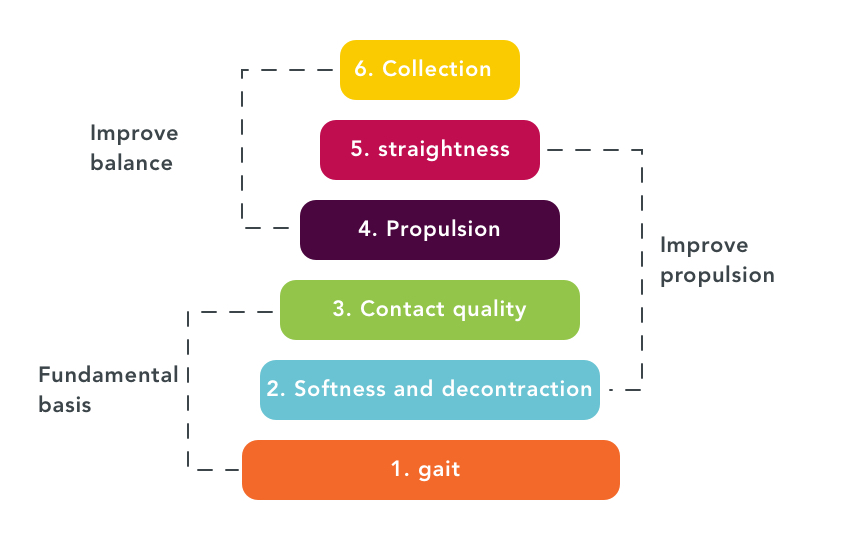
We will now focus on exercises that combine the four levels of impulsion:
- Flexibility and relaxation
- Contact quality
- Impulsion
- Straightness
Exercise # 1 – Lengthen the Reins
This exercise may seem simple at first but it is fundamental to master in all circumstances.
This exercise is about drawing a simple circle at trot or canter and letting your reins go loose on a quarter or on half the circle. The horse must stretch his neck down to maintain contact with the hand.
The contact quality is essential. He must be present, but flexible! The horse must also seek to the extension gradually without pulling on the reins.
Levels of the progression outline concerned:
1 – Correction of the pace
2 – Flexibility
3 – Contact quality
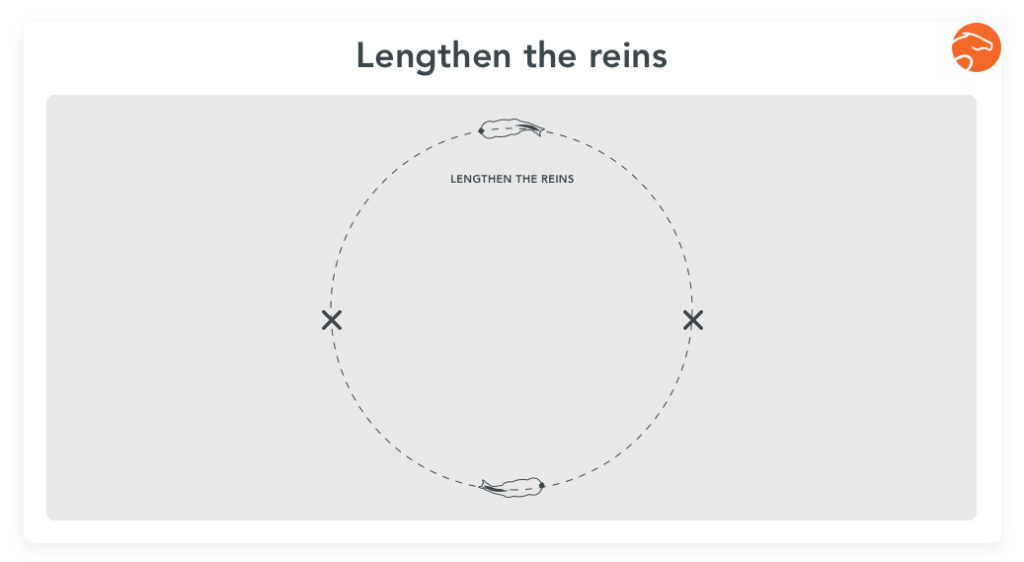
It is also a great exercise for muscle reinforcement which I explain more in detail in the following article: building neck muscles and build back muscles
Contribution of the Equisense Motion sensor:
If you’re looking for perfection, you can also track your cadence and elevation through your Equisense Motion sensor so to ensure that the locomotion does not deteriorate.
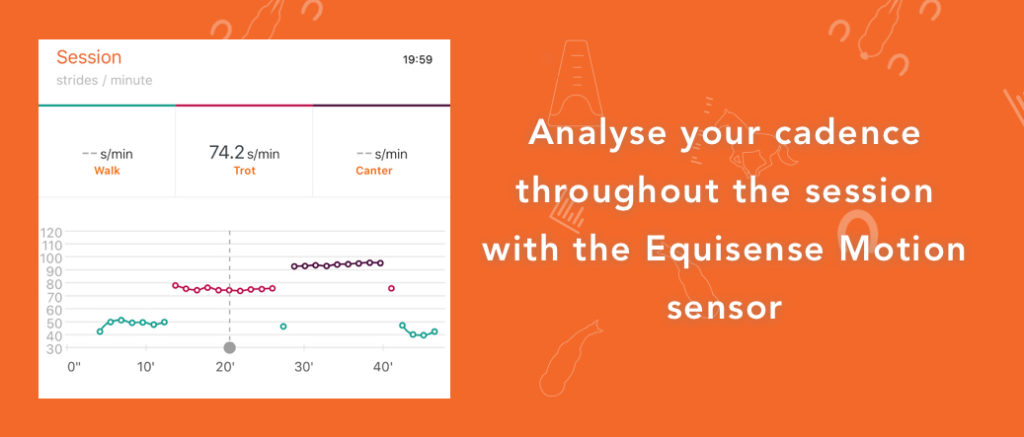
Exercise # 2 – Walk – Trot Transitions on a Circle
Draw a series of circles (8-10m diameter) at a walk with a large half circle (20m) at trot and repeat the exercise at will alternating both hands. You can also do this exercise at a trot and canter: trot on small circles and canter on the big half circle. Walk-canter transitions are also possible but only after mastering the first two steps.
Levels of the progression outline concerned:
2 – Flexibility
3 – Contact quality
4 – Propulsion
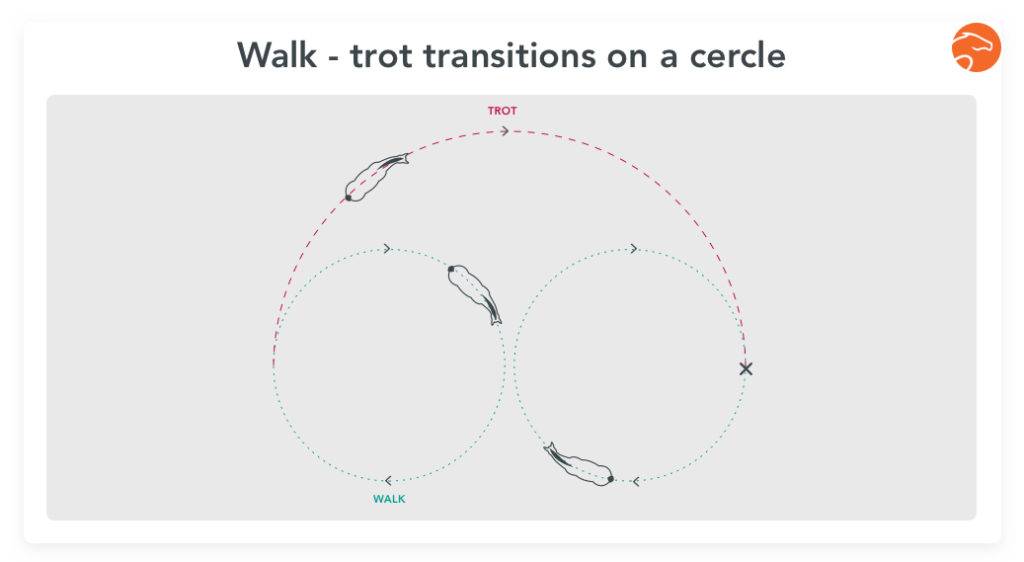
This exercise will improve the horse’s balance and coordination but above all, it helps him gain on transition honesty. All this while facilitating the engagement of the inside hind leg. Keep your inner rein loose all along the exercise.
And why not transitions on a straight line? Well because it fits in the “straightness” box of the progression outline, it is then more complicated …
Contribution of the Equisense Motion sensor:
The Motion will help you count your number of transitions, but will also help monitor the cadence and elevation which make it easier to analyse how the horse responds to the exercise. Does his cadence stabilize? Does his elevation increase?

Exercise # 3 – The Clover
This training exercise can be done at trot and canter. Chain 4 poles on the ground arranged in a square by drawing a circle between each of them. You can also try to gradually reduce the size of the circles as you go.
Levels of the progression outline concerned:
2 – Flexibility
3 – Contact quality
4 – Propulsion
5 – Straightness
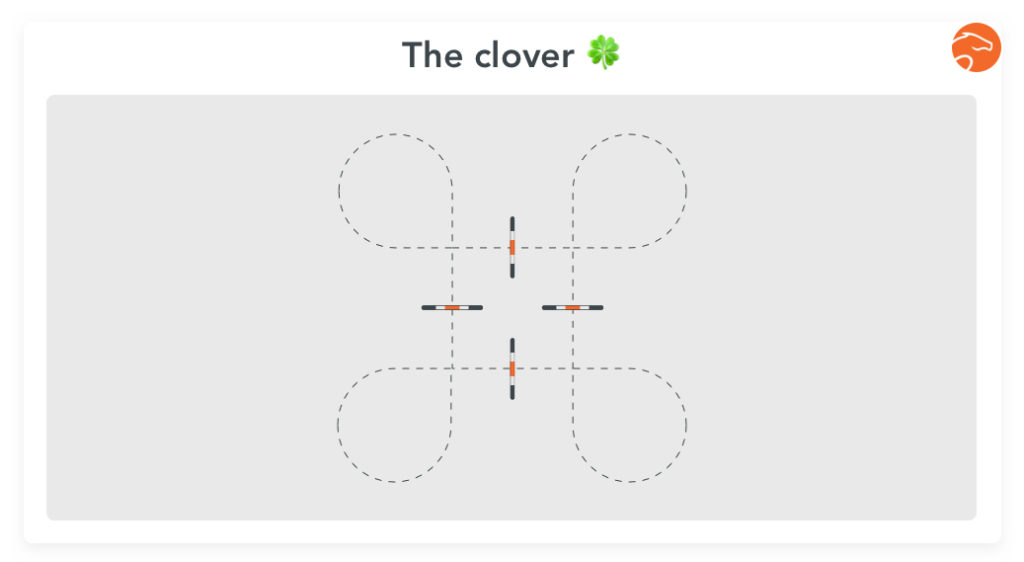
For this exercise you have to be very attentive to the quality of your layout in curves and in straight lines. Indeed, you must be able to chain a tight curve and a straight line “nice and straight” despite the disruption related to the ground pole.
You must therefore keep your horse well balanced in the curves by adapting the stride to the diameter of the circle. All this while maintaining a soft contact, a good longitudinal balance to pass the poles calmly. And of course without losing propulsion at the exit of the circle.
Be a perfectionist!
Contribution of the Equisense Motion sensor:
Follow the evolution of the cadence and regularity! You must be able to adjust the ground covering of the stride in the curves without changing the cadence!
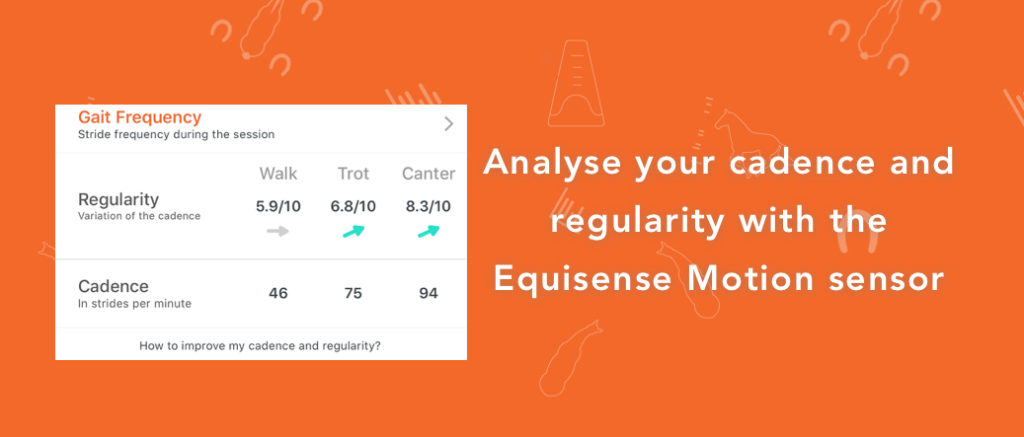
Exercise # 4 – Inner Shoulder – Extension
For this last exercise, you will have to train on shoulders in on the track for about 10 to 15 m and then to go on a half circle at working or elongated trot.
Levels of the progression outline concerned:
2 – Flexibility
3 – Contact quality
4 – Propulsion
5 – Straightness
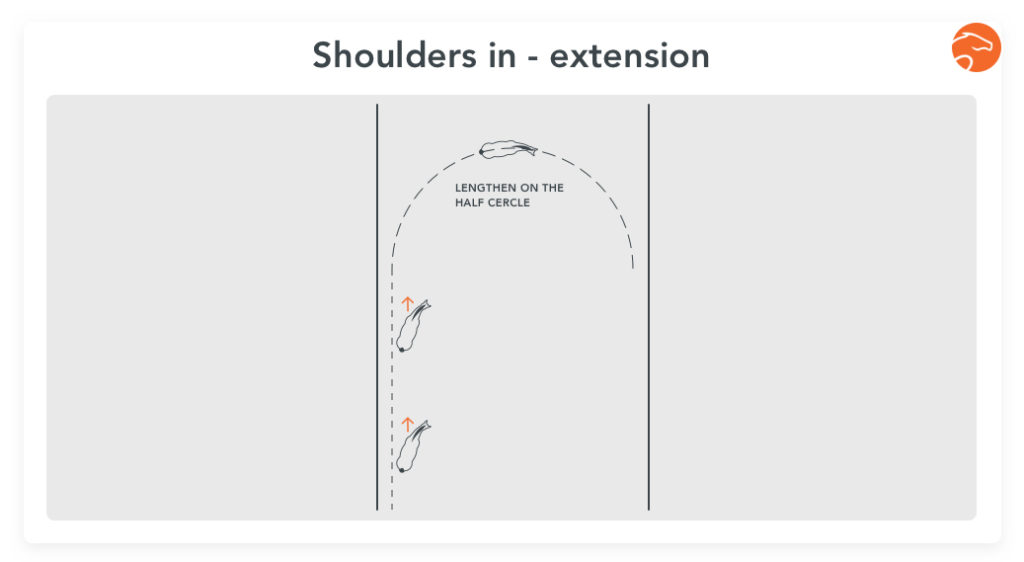
You can also do this exercise at a canter but with shoulders forward instead of a shoulders in. As a reminder a shoulder forward is a “mini shoulder in”.
The goal of this exercise is that the shoulders in allows the horse to engage his inner hind leg and rebalance his outer shoulder. The shoulders in are of a great help for elongated trot!
This exercise is interesting because it requires the horse to stay flexible longitudinally and laterally. The contact must stay soft for the shoulders in. The elongated trot helps with improving propulsion and the shoulders in helps straightening horses that go across the hand. This is particularly true at canter since horses naturally canter with the hips inside. The shoulders forward result in having a straighter horse.
Contribution of the Equisense Motion sensor:
Follow the cadence and regularity evolution during the elongation and the elevation evolution during the shoulders in! You must be able to increase the ground covering of the stride during the elongation without changing the cadence. The elevation should not decrease during the shoulders in.
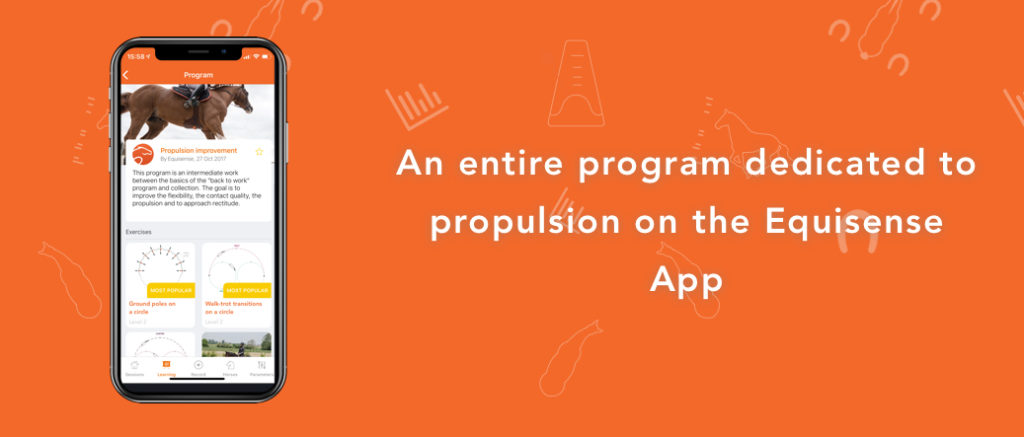
These were 4 exercises that will help you develop propulsion. It is an essential intermediate work, as for jumping riders that dressage riders.
If you wish to have more exercises please take a look at the Equisense App (available for iOS and Android) where an entire program (16 exercises) is dedicated to this subject!
Till next article,
Camille Saute,
R&D Resp. at Equisense
Bibliography
[1] Fédération Française d’Equitation, « L’échelle de progression », 2014. Téléchargeable à l’adresse suivante : https://www.ffe.com/officiel/Cursus/Dressage/Echelle-de-progression